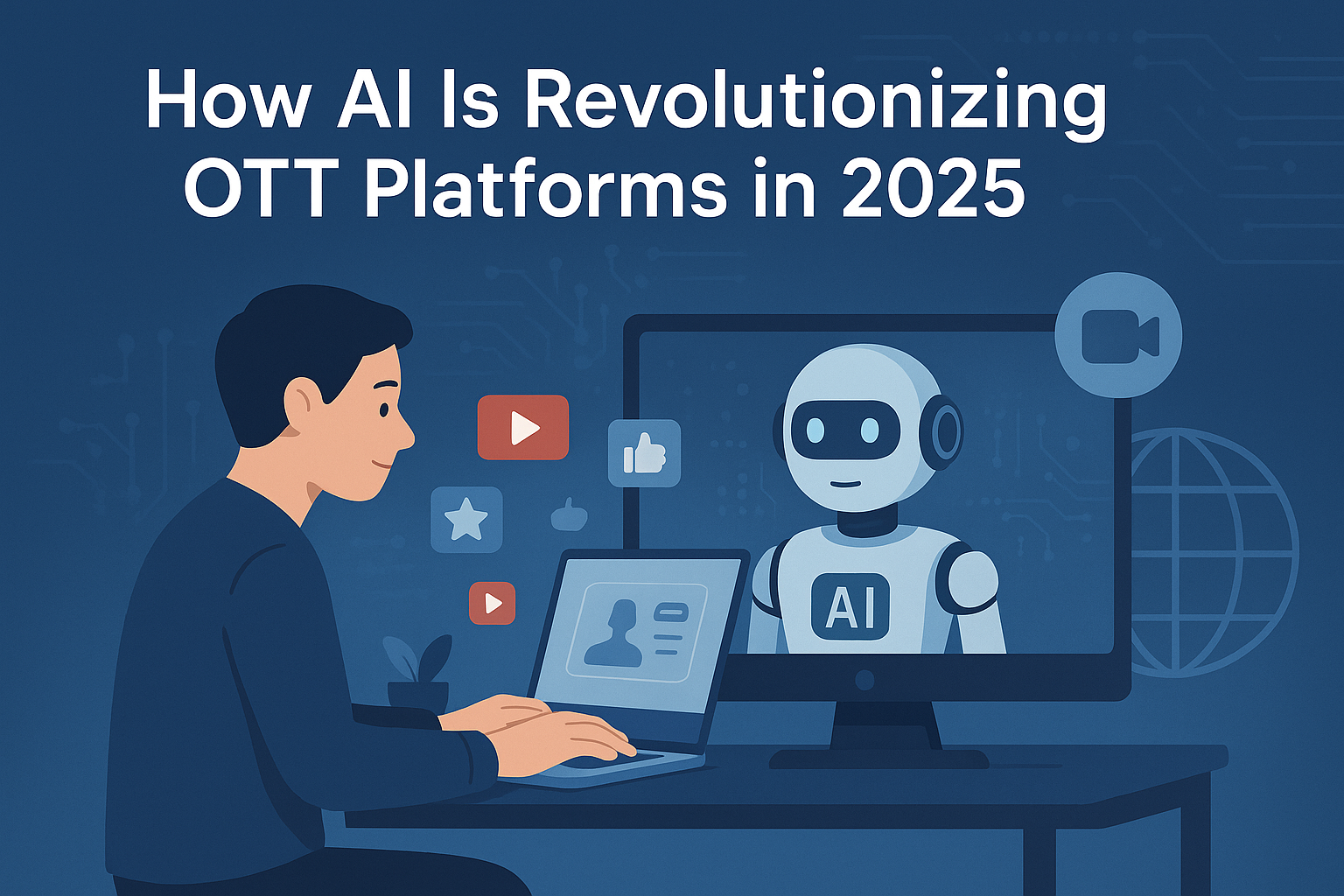
Table of Content
In recent years, Over-the-Top (OTT) platforms have transformed how the world consumes entertainment. From binge-worthy series to on-demand movies and live broadcasts, the OTT space has redefined viewer expectations. As millions of users globally continue to shift from traditional cable to online streaming, this industry has witnessed exponential growth—both in audience numbers and content consumption.
However, as the digital landscape becomes more saturated, innovation has become the lifeline for platforms striving to stand out. Viewers today demand more than just content—they seek personalization, convenience, and intelligent features that understand their preferences.
In 2025, AI is no longer just a backend optimization tool; it’s the powerhouse driving dynamic user experiences, smarter content delivery, and seamless operations. From personalized recommendations to automated content tagging and predictive analytics, AI in OTT platforms is setting a new benchmark for engagement and efficiency.
This blog explores how Artificial Intelligence is revolutionizing OTT platforms in 2025. You’ll gain insight into how AI technologies like machine learning and natural language processing are shaping viewer experiences—and how you can leverage these innovations to build an OTT platform that’s intelligent, scalable, and future-ready.
Whether you’re a media startup, a broadcasting brand, or exploring the streaming space, understanding this AI-powered shift is essential. We’ll also cover how partnering with the right AI development service can accelerate your journey in launching a competitive and adaptive OTT platform.
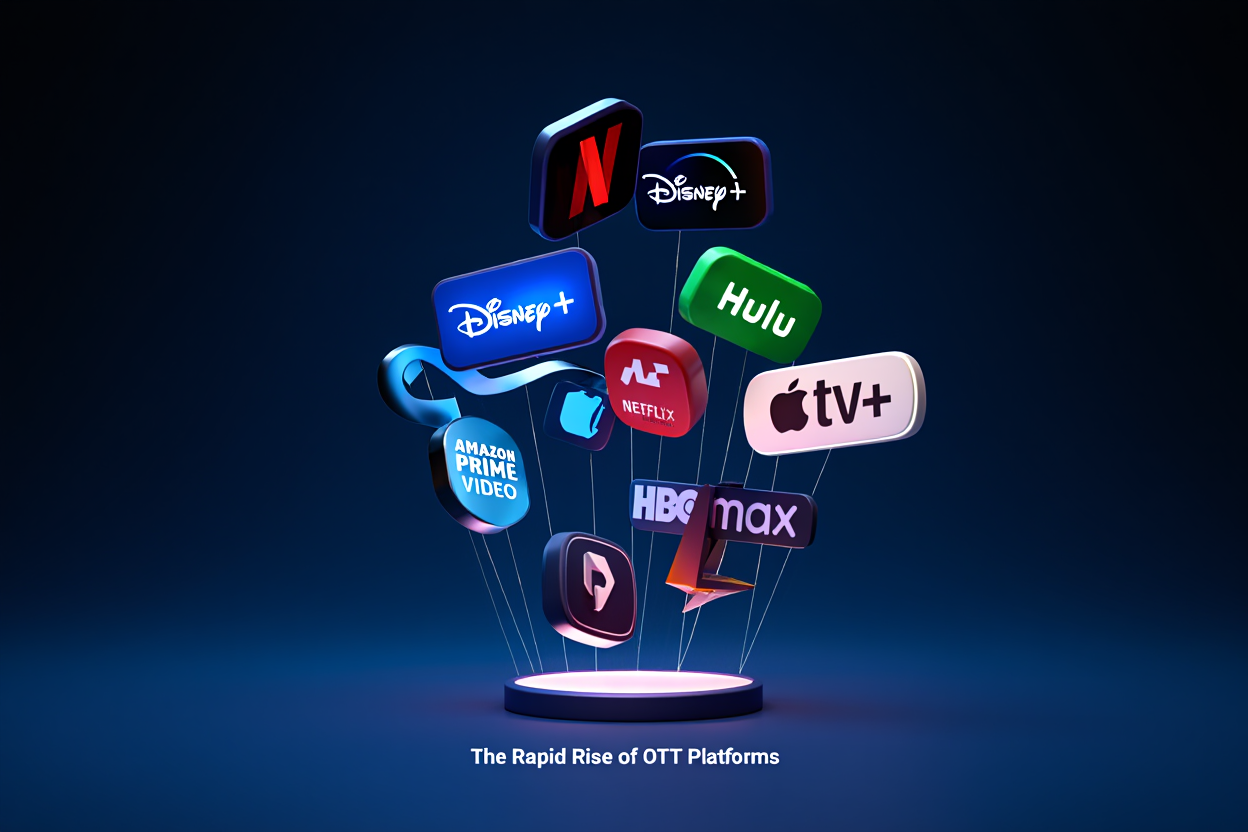
The OTT market has seen unprecedented growth over the past decade—and the momentum shows no sign of slowing. As of 2025, the global OTT industry is projected to reach a market value of over $400 billion, fueled by increasing internet penetration, smartphone adoption, and consumer demand for on-the-go entertainment.
Leading platforms like Netflix, Disney+, Amazon Prime Video, and emerging regional giants have set the tone for the future of digital entertainment. However, the competitive landscape is evolving rapidly. New players entering the market must now meet heightened expectations for personalization, content variety, and seamless user experience.
More importantly, consumers are no longer passive viewers. They’re seeking content that resonates personally with their taste. This shift toward individual-centric viewing has created a pressing need for intelligent solutions that can adapt and respond to user behavior in real time.
To remain competitive, businesses must create OTT platforms that are agile, data-driven, and capable of delivering tailored experiences. This is precisely where AI in OTT platforms begins to show its transformational power—making the difference between a standard streaming app and a truly immersive digital experience.
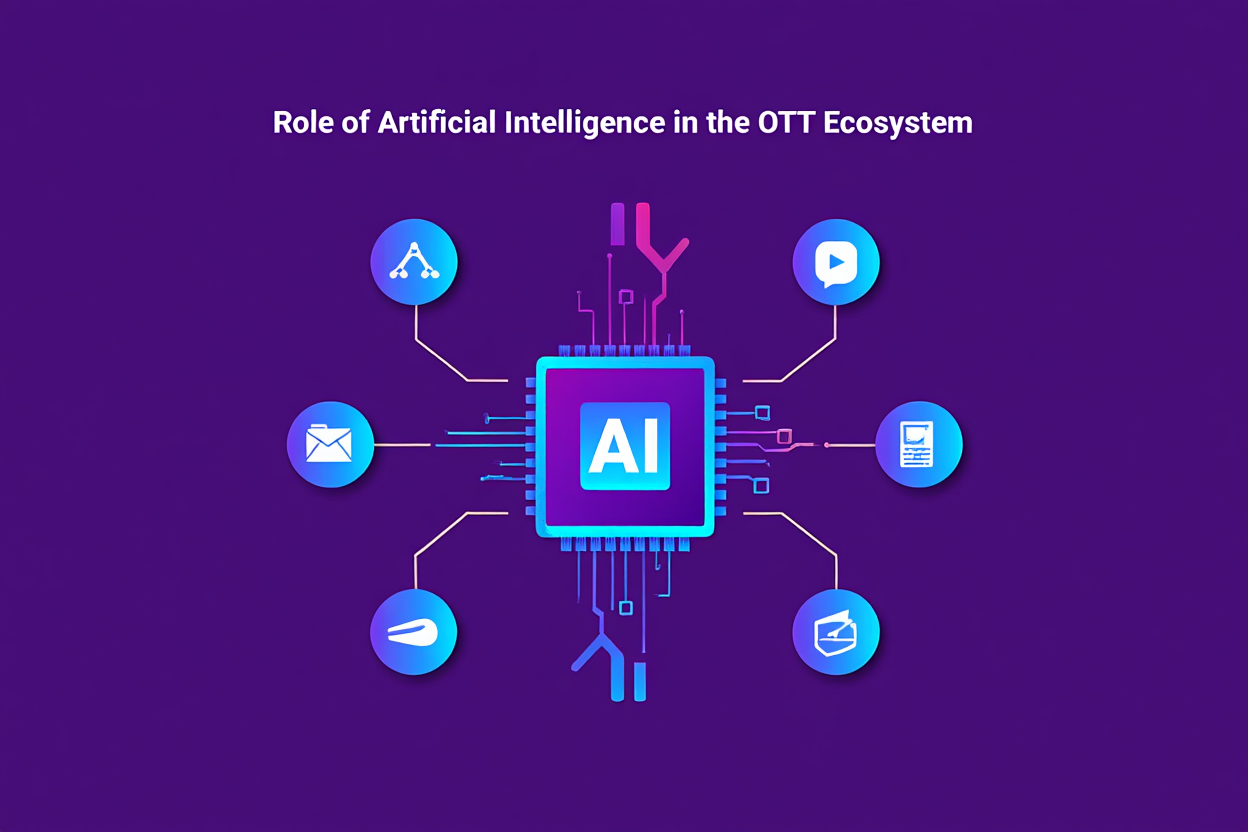
To understand the influence of Artificial Intelligence in OTT, it’s essential to grasp the underlying technologies that enable this transformation.
AI encompasses a suite of technologies that allow systems to simulate human intelligence. This includes:
In the context of OTT platforms, these technologies are not just backend tools—they’re the engine that drives the entire user experience. AI collects and analyzes vast datasets—from viewing history to engagement patterns—to make real-time decisions that enhance both the content delivery and user satisfaction.
Data-driven decision-making has become the foundation of successful OTT strategies. Platforms that can capture, interpret, and act on user data effectively are the ones able to keep viewers engaged longer and reduce churn. With AI, businesses can dynamically personalize interfaces, suggest content with uncanny accuracy, and even predict what content should be produced next based on predictive analytics.
Whether you’re aiming to build an OTT platform from scratch or upgrade an existing one, integrating AI functionalities has become not just a value-add but a strategic necessity. At this intersection of entertainment and intelligence, companies offering AI chatbot solutions, AI agent services, and AI development services play a pivotal role in bringing these innovations to life.
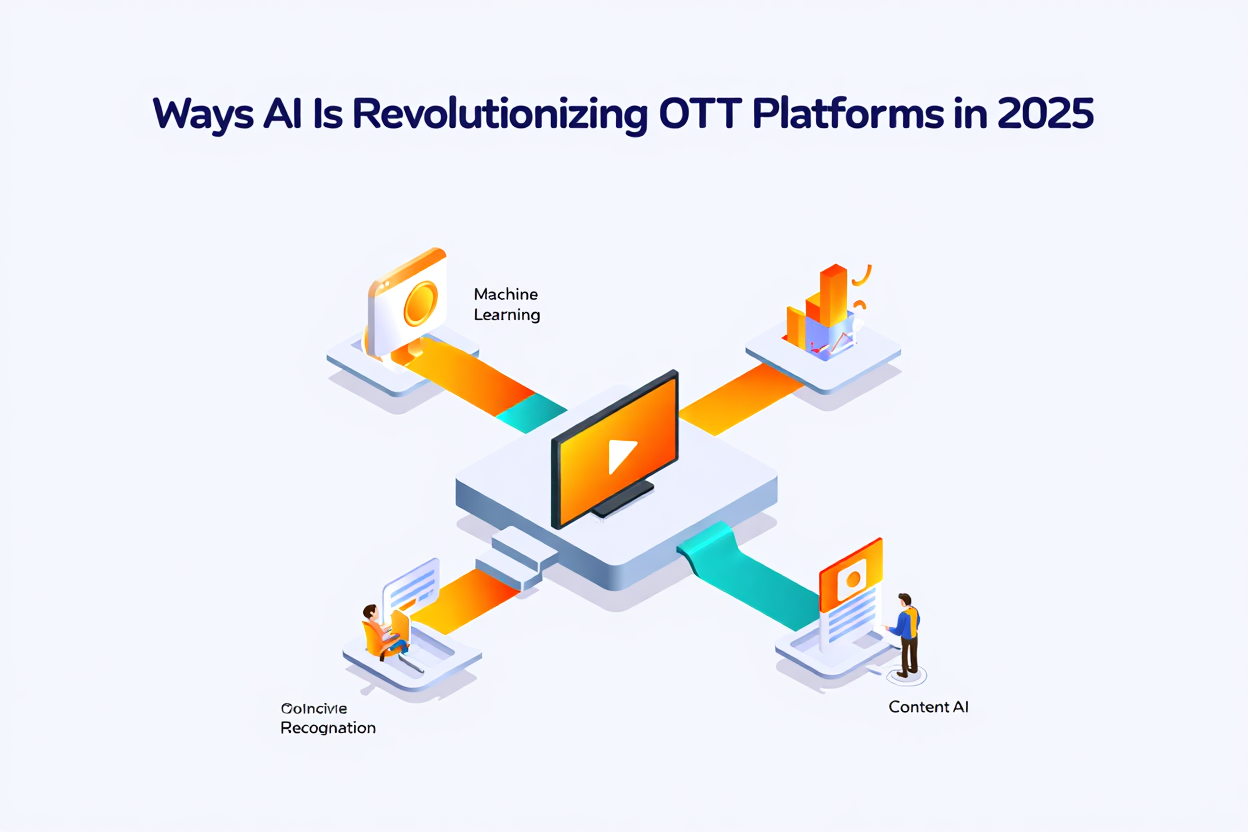
The integration of Artificial Intelligence in OTT platforms has gone far beyond recommendation engines. In 2025, AI is embedded into nearly every layer of the OTT ecosystem—from backend infrastructure to front-end user interfaces—delivering not just smarter experiences, but measurable business outcomes. Here’s how AI is reshaping the OTT landscape:
In today’s hyper-competitive OTT environment, personalization is not a luxury—it’s an expectation. AI-powered recommendation engines use a combination of behavioral analytics, watch history, user preferences, device usage patterns, and even time-of-day viewing habits to suggest content tailored to individual users.
Platforms like Netflix and Amazon Prime have pioneered this approach, where more than 80% of watched content now comes from AI-driven recommendations. This level of precision keeps users engaged longer and significantly reduces churn.
If you’re looking to build an OTT platform, this is one of the most critical AI features to implement—keeping your content relevant, timely, and user-specific.
AI doesn’t just work behind the scenes—it directly improves how users interact with content. From voice-enabled search powered by Natural Language Processing (NLP) to intelligent navigation that predicts what a user wants before they even search, AI makes the interface smoother, faster, and more intuitive.
Predictive UI design, driven by machine learning, adapts the interface based on user behavior. If a user frequently watches thrillers, the homepage may automatically highlight new suspense releases or related categories. These subtle enhancements lead to a more immersive and engaging experience.
If you’re working with a mobile app development company to create an OTT platform, AI-enhanced UX should be a core feature of your development strategy.
AI isn’t only changing how content is consumed—it’s transforming how it’s created. With predictive analytics, content producers can forecast what genres, topics, or actors are likely to attract high engagement, even before production begins.
AI tools now assist in:
This reduces production risk and boosts ROI by ensuring content investment aligns with audience demand. Whether you’re a content house or planning to build an OTT platform with original programming, these tools empower you to make smarter creative decisions.
Streaming quality is a make-or-break feature for any OTT platform. With AI-driven video compression and adaptive bitrate streaming, users enjoy smooth playback—even with fluctuating internet speeds.
AI algorithms analyze user devices, bandwidth availability, and screen resolution in real time to optimize the video stream. This not only enhances viewer satisfaction but also reduces server load and bandwidth costs.
If you’re relying to architect your streaming backend, incorporating AI-based video delivery solutions will give your platform a competitive edge.
Metadata is crucial for searchability, content indexing, and discoverability. Traditionally, tagging content with descriptions, categories, actors, and themes was a manual, error-prone task. AI in OTT platforms now automates this process with high accuracy.
AI tools can:
This significantly boosts content visibility on internal search engines and improves external discoverability on platforms like Google. If you aim to create an OTT platform that scales, automated metadata generation is a must-have feature.
Monetization in the OTT world goes far beyond subscription models. With AI-powered advertising, platforms can serve behaviorally targeted ads based on demographic, location, viewing habits, and even mood analysis.
AI ensures that users see ads that are actually relevant to them, improving ad performance and increasing revenue for the platform. Simultaneously, it avoids content fatigue by ensuring ad frequency and placement don’t disrupt user experience.
AI-driven monetization tools are essential if you’re planning to build an OTT platform that includes freemium or ad-supported models.
Security is a growing concern for OTT platforms dealing with content piracy, account sharing, and fraud. Artificial Intelligence in OTT has introduced advanced tools to combat these threats.
AI algorithms help identify:
AI watermarking, facial recognition, and content fingerprinting further protect intellectual property. Partnering with the right AI development service can help you integrate such security mechanisms seamlessly into your platform.
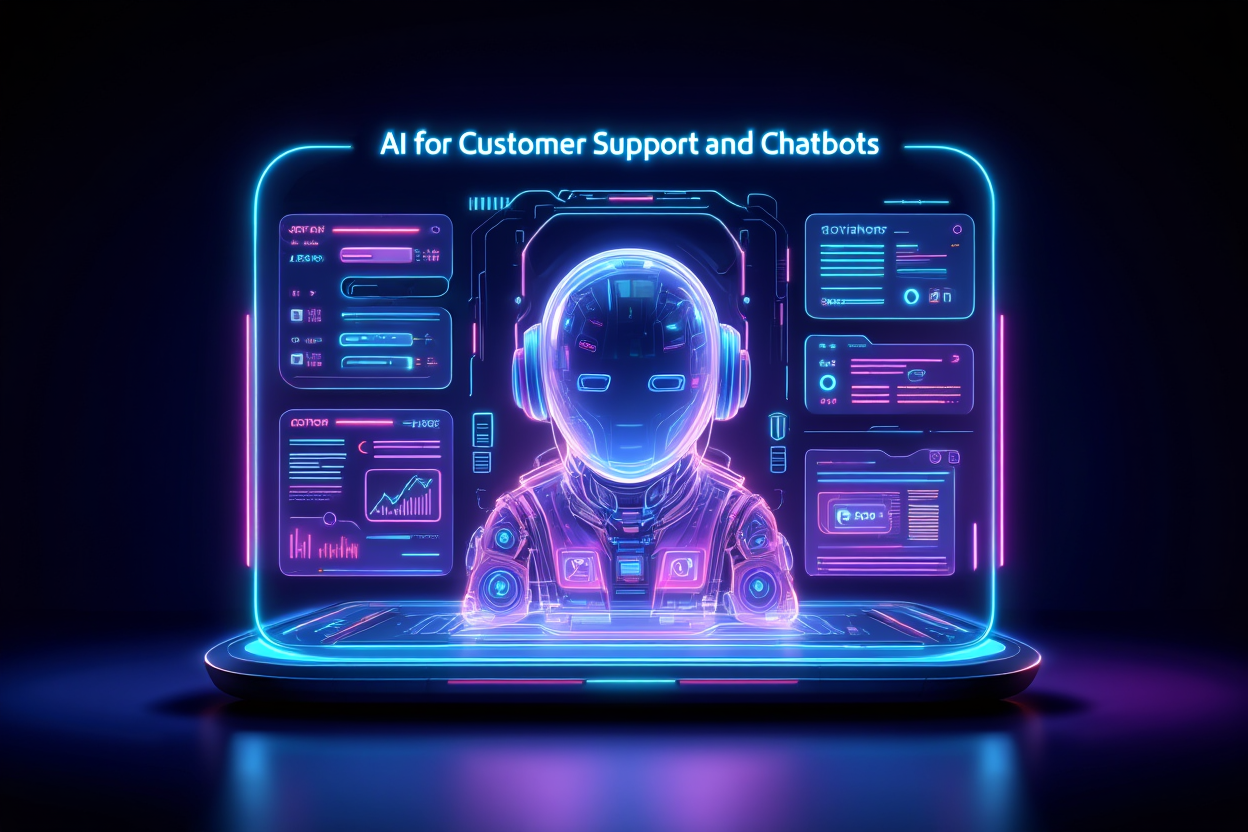
Customer service plays a critical role in retaining subscribers. With the help of AI chatbot solutions, OTT platforms now offer round-the-clock support with instant query resolution.
From handling subscription issues to providing content suggestions and troubleshooting playback problems, AI-powered chatbots use NLP and machine learning to understand and resolve issues faster than traditional support teams.
These bots are also integrated with backend systems for tasks like subscription renewal, payment confirmations, or usage analytics. If you’re planning to launch a smart and scalable OTT product, integrating AI agent services is a smart move for both support efficiency and user satisfaction.
Leading OTT platforms have embraced Artificial Intelligence in OTT operations to unlock new levels of performance, engagement, and personalization. These real-world examples showcase how AI is being applied strategically in 2025:
Netflix has long been a pioneer in AI adoption, and in 2025, the platform has further advanced its AI infrastructure to personalize user experiences in real-time. Its algorithm analyzes micro-behaviors—like how long users hover over thumbnails or skip intros—to optimize recommendations and predict watch likelihood with high accuracy. AI also helps Netflix greenlight content projects based on predictive audience metrics, improving ROI and reducing production risks.
Disney+ utilizes AI not just for recommendations but also for AI-assisted content creation. Tools like AI-driven animation, voice synthesis, and intelligent scriptwriting are now being used to accelerate production timelines. AI also enables localized content adaptation through real-time dubbing and auto-generated subtitles, expanding Disney+’s reach in emerging markets.
Hulu uses AI to analyze viewer preferences, browsing behavior, and time-of-day patterns to deliver behavior-targeted advertising. By applying predictive analytics, Hulu helps advertisers maximize ROI while ensuring viewers see fewer, more relevant ads—striking a balance between monetization and user experience. For businesses planning to build an OTT platform, Hulu’s model illustrates how AI can be pivotal for revenue generation.
YouTube’s success has always hinged on content discoverability. In 2025, YouTube’s AI-driven recommendation engine uses deep learning to understand viewer intent and serve up hyper-relevant videos. Additionally, its Content ID system—enhanced by AI—automatically detects copyright violations and piracy in real-time, helping protect creator rights at scale.
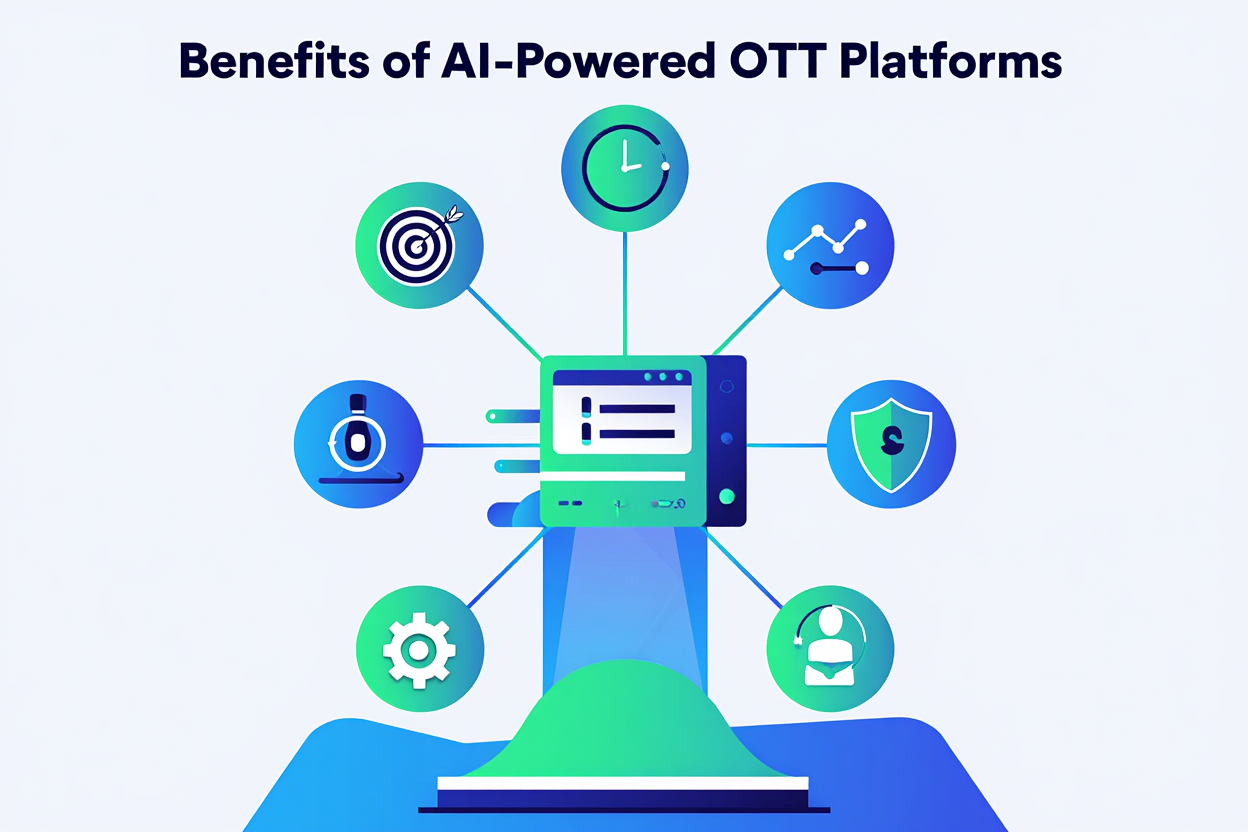
Implementing AI in OTT platforms delivers a competitive advantage far beyond automation. The following are key benefits businesses are leveraging today:
AI’s ability to personalize content, interfaces, and recommendations results in more meaningful interactions. When users feel like a platform understands their tastes, they’re more likely to return—leading to improved retention and longer viewing sessions.
Whether through AI-powered ad targeting, dynamic pricing, or subscription model optimization, AI enables smarter monetization. Ad placement becomes less intrusive and more effective, maximizing both ad revenue and viewer satisfaction.
AI helps platforms forecast content performance even before production. This predictive modeling ensures investment goes into content that aligns with audience demand, increasing the likelihood of high ROI and reducing costly flops.
From metadata generation to video encoding, AI automates tasks that would otherwise require large operational teams. For companies planning to create OTT platforms, AI-driven workflows enable faster scaling and leaner operations. Partnering with an AI development service ensures seamless integration of these technologies into your custom platform.
While the benefits are compelling, deploying Artificial Intelligence in OTT platforms comes with its own set of challenges:
With great data power comes great responsibility. Collecting and processing viewer behavior must comply with data protection regulations like GDPR and CCPA. Failing to manage user consent and data security can lead to legal and reputational risks.
Building AI infrastructure requires skilled resources, advanced tools, and long-term investment. Many companies turn to experienced AI development services to reduce cost and complexity while ensuring quality.
The effectiveness of AI models depends on the quality and quantity of data. Inaccurate, biased, or insufficient data can lead to poor recommendations, flawed predictions, or even user dissatisfaction.
AI models, if not properly trained, can reflect social or cultural biases—impacting content recommendations and ad targeting. Continuous monitoring, model retraining, and ethical oversight are essential to avoid alienating user groups.

The synergy between AI and OTT is evolving rapidly, ushering in futuristic innovations that are already taking root:
AI is now being used to generate entire shows, simulate celebrity voices, and recreate historical scenes using deepfake technology. This opens new creative possibilities but also raises ethical questions around authenticity.
AI-generated hosts—complete with realistic voices and mannerisms—are being used for entertainment shows, product reviews, and even personalized content briefings. These AI agents are redefining digital interaction and engagement.
Advanced AI algorithms can now detect viewer mood through facial recognition or tone of voice. This enables emotion-based content curation, where content is suggested to uplift, relax, or energize viewers based on their current state.
The integration of AI with 5G, AR, and VR is giving rise to next-gen OTT experiences—think interactive storylines, real-time immersive environments, and personalized VR recommendations. This evolution is not just about watching content, but experiencing it.
For forward-thinking media companies or any building OTT solutions, these trends mark the roadmap for the next generation of entertainment.
Building an OTT platform can cost anywhere from $15,000 to over $500,000, depending on your feature set and customization level. A basic platform with core features like video streaming and user login may cost between $15,000 and $50,000. Mid-range platforms with payment integration, multi-device support, and analytics might fall between $50,000 and $150,000. For enterprise-level platforms with advanced personalization, massive content libraries, and high-end security, costs can exceed $150,000 to several million dollars.
Here’s a general cost breakdown to help guide your planning:
In some enterprise cases, where platforms include live streaming, multilingual AI content localization, advanced monetization models, or full-scale TV app deployment, the investment can even reach several million dollars.
Key Cost Factors
| Factor | Impact on Cost |
| Number of Platforms (Web, Android, iOS, TV) | +$10K–$30K per platform |
| AI Features (recommendations, ad targeting, chatbots) | +$15K–$50K+ |
| Backend Infrastructure (cloud, CDN, video processing) | +$10K–$40K |
| UX/UI Design Complexity | +$5K–$20K |
| Third-Party Integrations (payment, DRM, analytics) | +$5K–$25K |
| Ongoing Maintenance & AI Model Training | 15–25% of initial dev cost annually |
As a trusted provider of AI development services, we offer:
At the intersection of technology, entertainment, and intelligence, building a high-performing OTT platform demands more than just a streaming app—it requires a deep understanding of AI in OTT platforms, robust engineering, and user-centric design. That’s exactly where we come in.
As a trusted expert in AI development services, we provide end-to-end solutions tailored to help you build an OTT platform that is future-ready, scalable, and powered by intelligent automation.
Whether you’re launching your first platform or scaling an existing product, we specialize in building fully customized OTT solutions across devices.
Our development framework ensures your OTT product delivers a consistent, high-quality experience regardless of device or region.
Unlock the true power of Artificial Intelligence in OTT through our advanced AI modules that enhance engagement, retention, and monetization.
Whether you’re looking to integrate new AI features or retrofit them into your existing system, we provide the expertise to do it right.
We combine creative design with AI-powered data to deliver experiences that feel intuitive and personal.
Our design process is rooted in behavioral data, ensuring users stay engaged longer and return more often.
We architect your OTT infrastructure on the cloud for seamless global delivery and uninterrupted performance.
Whether you expect a few thousand or millions of users, our architecture grows with your audience.
We walk with you through every phase—from idea to implementation and beyond.
Our agile teams collaborate closely with you to ensure the product evolves with market demands and technological advancements.
We’ve helped startups and media brands create OTT platforms that have successfully launched in competitive markets. Our results-driven approach and deep industry expertise have enabled clients to:
AI is no longer a futuristic feature—it’s the driving force behind the next generation of OTT platforms. From hyper-personalized content discovery and smart user interfaces to real-time video optimization and predictive monetization, the role of AI in OTT platforms is transforming every aspect of how we build, consume, and manage digital content.
For businesses looking to build an OTT platform that’s not just functional but visionary, Artificial Intelligence in OTT offers a clear path to competitive advantage. However, success lies in the execution—partnering with the right team that understands the technology, audience, and infrastructure requirements.
At our core, we blend creativity, technology, and innovation to deliver intelligent OTT experiences that engage, convert, and scale.
